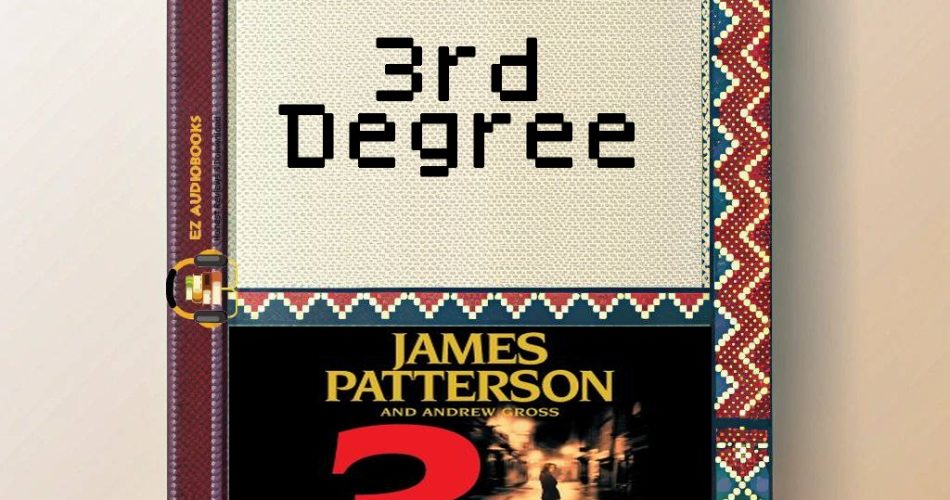Audiobook Sample
Listen to the sample to experience the story.
Please wait while we verify your browser...
- Title: 3rd Degree
- Author: Andrew Gross, James Patterson
- Narrator: Carolyn McCormick
- Length: 06:43:39
- Version: Abridged
- Release Date: 01/08/2005
- Publisher: Hachette Book Group USA
- Genre: Mystery, Thriller & Horror, Detective Stories, Legal Thriller, Mystery, Thriller & Horror, Detective Stories, Legal Thriller
- ISBN13: 9.78E+12
As I settled into my favorite armchair with a cup of jasmine tea – the same one I used during my Berkeley seminars on narrative tension – Carolyn McCormick’s voice transported me back to San Francisco’s fog-draped streets with startling immediacy. This 3rd Degree audiobook experience represents a fascinating case study in how vocal performance can elevate already compelling source material.
Through my cultural lens as both a literature professor and longtime Patterson enthusiast, what fascines me most is how this installment of the Women’s Murder Club series balances procedural authenticity with emotional depth. The opening sequence – where Lindsay Boxer stumbles upon that fiery townhouse explosion – immediately establishes McCormick’s mastery of pacing. Her delivery captures that perfect rhythm Patterson’s writing demands: urgent yet controlled, like a seasoned detective processing a crime scene.
This reminds me of when I compared different media formats of crime narratives during my Tokyo lectures. Just as film adaptations lose certain literary nuances while gaining visual impact, audiobooks transform textual experiences through vocal interpretation. McCormick’s performance here exemplifies this transformation – her ability to distinguish between Lindsay’s professional determination, Claire’s medical precision, Cindy’s reporter curiosity, and Jill’s legal intensity creates an aural tapestry richer than silent reading could achieve.
From an analytical perspective, several elements make this production stand out:
1. “Temporal Pacing”: McCormick handles Patterson’s signature short chapters with intelligent breath control, creating natural suspense at each section break. The ‘three day’ countdown structure feels particularly visceral in audio format.
2. “Emotional Resonance”: Listen closely to how McCormick modulates her tone during the infant subplot – that subtle tremble when Lindsay discusses the missing child demonstrates nuanced vocal acting that print cannot convey.
3. “Technical Accuracy”: Having consulted with forensic specialists during my crime fiction research, I appreciate how McCormick nails the medical and legal terminology with Claire and Jill’s dialogue.
The cultural context of these women professionals collaborating equally – still noteworthy when originally published – comes through more powerfully in audio. McCormick’s delivery underscores their distinct expertise without caricature, making their dynamic feel authentically progressive rather than performatively diverse.
However, the audiobook format does reveal some narrative limitations. Patterson’s economical style – while effective in print – occasionally feels abrupt in audio during transitional scenes. Some character motivations that might linger on the page get rushed in narration. And while McCormick excels with the core quartet, a few secondary male characters blend together vocally.
Compared to other Patterson audiobooks I’ve taught in my Mystery Fiction courses, this stands among the top tier due to McCormick’s performance. It surpasses many multi-narrator productions by maintaining consistent tone while still achieving character distinction – a lesson I often emphasize when analyzing audio adaptations.
For potential listeners, I’d recommend:
– “Legal thriller enthusiasts” will appreciate how the courtroom elements gain dramatic weight through audio
– “Procedural purists” should note the authentic investigative details shine in this format
– “Character-driven readers” will find the friendships more intimate through vocal performance
As the final chapters unfolded during my evening walk (my preferred audiobook ritual), I realized this production exemplifies why I champion audio adaptations in my Digital Humanities work. The medium doesn’t replace reading – it creates a parallel experience with its own artistic merits. McCormick’s narration doesn’t just recite Patterson’s words; she reinterprets them with professional insight that would make Lindsay Boxer herself nod in approval.
In scholarly appreciation of the audio narrative arts,
Prof. Emily Chen

